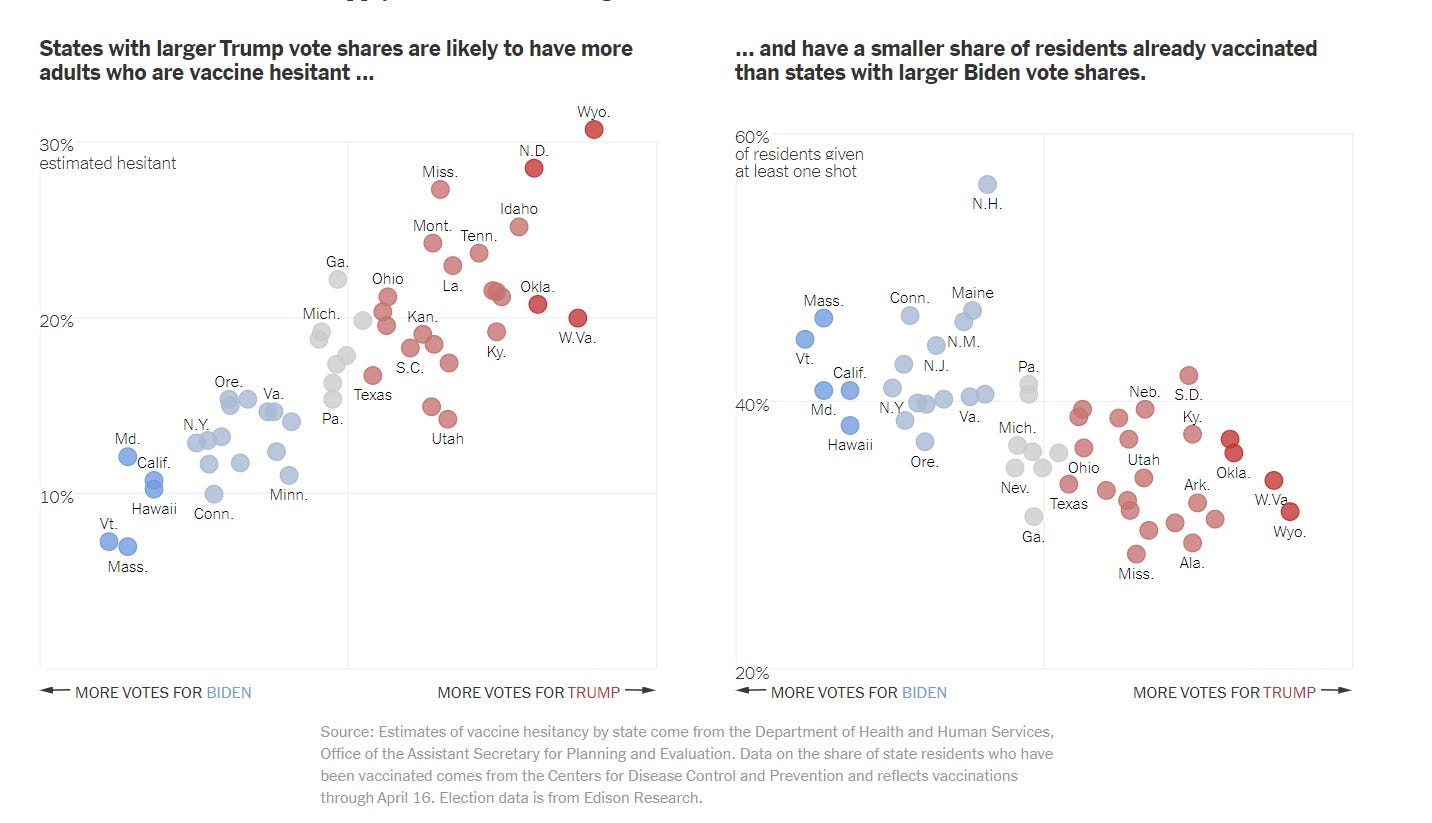There is a deep partisan divide in covid vaccine hesitancy and masking habits... but it could be deeper, right?
A surprisingly high number of Donald Trump's voters say they have been partially or fully vaccinated
At this blog, I try not to write at all about data I also use for my day job at The Economist. Separation of church and state or what-have-you. Eventually, however, there will be some overlap. And since this information is already public I figure I’ll offer brief commentary on new coronavirus polling that came out this week.
Let’s start with the numbers. The latest polling data from YouGov show a deep divide in covid-19 vaccination rates among Trump and Biden voters:

This information is not exactly new; we have known for a while that vaccination rates in red-leaning states have been lagging ratings in blue ones. The charts below show both polled hesitancy to take the vaccine and actual vaccination rates by the results of the 2020 election:
I want to first internalize the significance that over half of Trump voters told YouGov they have been fully vaccinated. (Yes, these data closely match the CDC numbers on vaccination rates.) That so many Republicans are following the science on vaccinations, regardless of continued skepticism from the likes of Fox News hosts and GOP US senators puts the power of polarization into perspective. Although YouGov’s poll reveals a roughly 30-percentage-point divide in the share of Democrats versus Republicans who have or are planning on getting vaccinated, the average person in either camp is still listening to the medical advice on the vaccine. This is a small victory, of course, but that percentage was higher than I expected. We can all celebrate that.
Yet there is still a large partisan divide. Despite some unnecessaryily contrarian (and incorrect!) pushback on this point, membership in the Republican party is a significant predictor of (a) telling pollsters you won’t or are “not sure” about receiving a vaccine and (b) only wearing a mask “rarely” or “not at all.” This relationship persists even after you control for a host of demographic, political and geographic variables (including education, gender, race, urbanicity, state of residency and attention to the news, among others). I even did the math!



According to these tables, hesitancy to take the vaccine and probability of refusing to wear a mask increase by 23 and 17 percentage points, respectively for Republicans relative to Democrats. (Interestingly, Independents are slightly less likely than Republicans to get the vaccine, but more likely to wear masks.)
That is high — and we have all the political science research in the world to explain why. Voters tend to adopt the stances of their elected officials and associated opinion leaders, such as ideologically aligned news hosts and loud political activists. They also tend to react negatively towards whatever the opposition is saying. In this case, Joe Biden’s embrace of masking and the vaccine may actually lead to residual decreases among Republicans. (Of course, the baseline there is a non-polarized world; it is still helpful for Biden to recommend scientific practices for combatting pandemics.)
However, as I wrote on Sunday, the models that predict our behaviors are complex, taking in multiple inputs to produce one observable output. Party membership is not the sole predictor of how people respond to public health emergencies. If it was, we would be in a whole lot more trouble. I think this is a perspective worth holding in your head.





Thanks for putting in the data correlations and glm. Do that more often